4G Pitch Construction
In recent years, the installation of 4G pitches has gained popularity due to their durability and year-round usability. However, the environmental impact of these synthetic surfaces raises significant concerns, particularly regarding habitat destruction and long-term ecological damage. Proposals rarely account for the loss of biodiversity, focusing instead on ground conditions and drainage requirements.
Kenilworth Square will be stripped of vegetation, including trees, shrubs, and grasses. This not only removes the habitats of various species but also disrupts the local ecosystem. The use of heavy machinery will compact the soil, making it difficult for any remaining plant life to survive.
A Case Study – Kingsholm Rugby Stadium, Gloucester
Historically, Kingsholm Stadium has had a reputation as one of the most troublesome, wet, grassless pitches1 and as a result they made the decision to install an artificial pitch. Kenilworth Square is fortunate not to have this drainage issue.
Most people just see the end result of a 4G pitch, without realising the significant environmental toll of its installation. The process often involves the use of non-renewable resources and the emission of greenhouse gases during the production and transportation of synthetic materials. Additionally, the installation typically requires extensive groundwork, potentially disrupting local ecosystems and soil health.
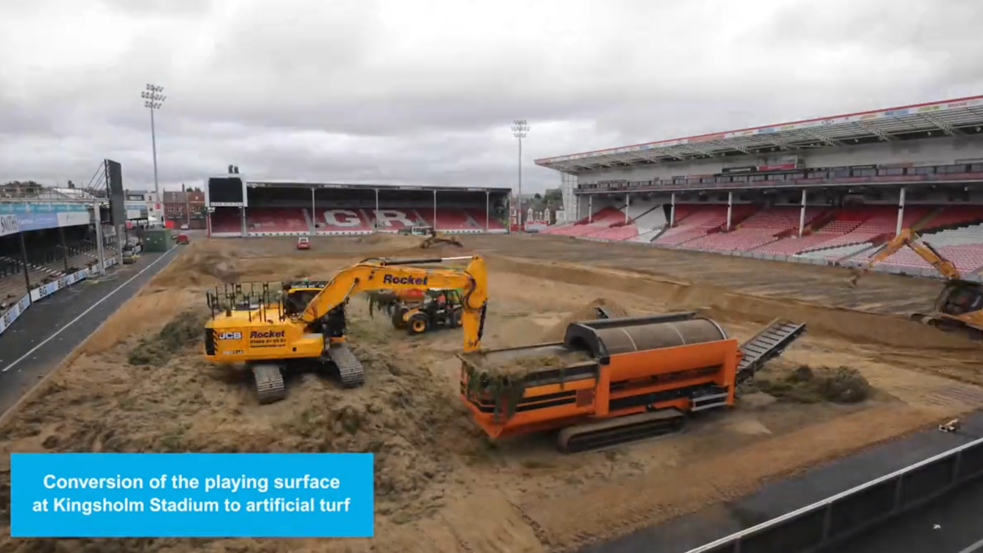
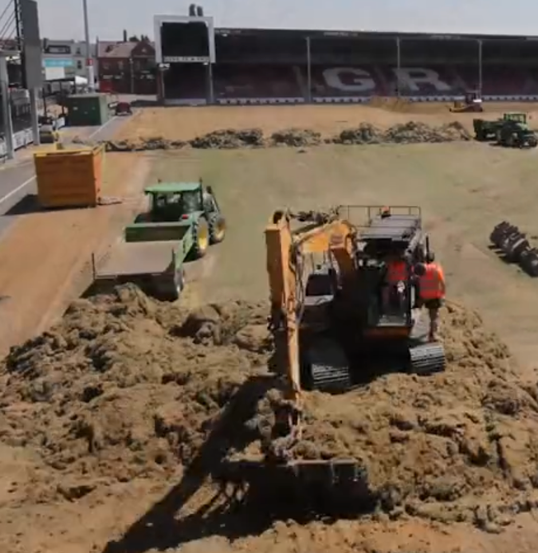
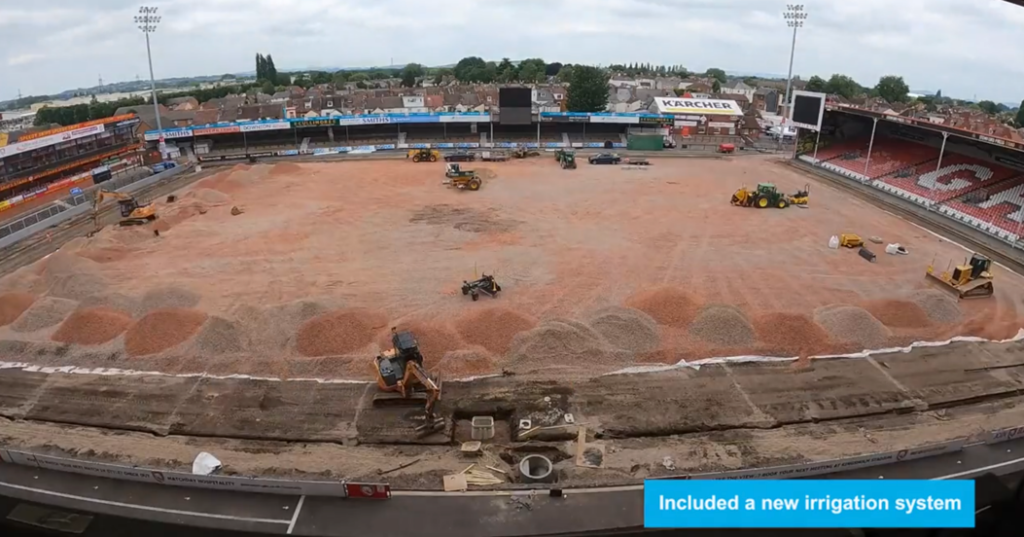
4G Pitches
Permission for a full-length (100m x 70m) 4G synthetic (‘plastic’) pitch has been granted by Dublin City planners to St Mary’s College Rathmines in Kenilworth Square, running on a South/North axis to where it meets the formerly proposed full-length Hybrid pitch. The latter will be on a West-East orientation, at the North end of the Square. If the second pitch is a hybrid pitch, as initially proposed, then the two pitches combined would replace practically the entire natural grassland of the park, forming an enormous T, with most of the remaining space taken up with Car Parks, for a total of 16 vehicles, a Bicycle Park for 38 bicycles, a large Pavilion and a Covered Spectator Viewing area. Six intrusive 18m-high floodlights for the 4G pitch add the final touch to a dismal prospect.
4G Pitch – Some Pointers
- As a synthetic pitch it is made up of entirely artificial materials. Due to no infill, injury risk is higher.
- The sub base is compacted stone over a geo-textile membrane.
- The natural drainage of the Square would be permanently altered and artificial drainage would have to be installed. This is highly complex and comes with risks.
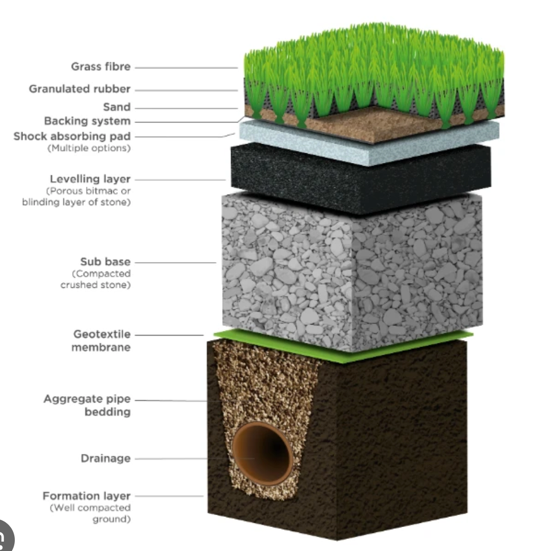
Hybrid Pitches
Hybrid grass is a product created by combining natural lawn grass with reinforcing synthetic fibres.
St Mary’s College Rathmines initially proposed not only to construct a 4G synthetic / plastic pitch, but also a hybrid pitch in Kenilworth Square. They subsequently indicated that the hybrid pitch would be a reseeded grass pitch. As residents of Kenilworth Square were kept in the dark about St Marys College Rathmines plans for Kenilworth Square for four years, it is not surprising that they do not have confidence in what the future holds for the Square. Natural grass is the most efficient surface with regard to ecological and economic sustainability. It is naturally self-renewing. Due to the use of artificial fibres, hybrid ‘turf’ will sooner or later need to be replaced. In addition, many landscape authorities are unhappy that hybrid pitches introduce artificial fibres into natural substrate. The effects of this are still not fully understood.
Hybrid Grass Composition
- The synthetic fibres used in hybrid pitches contribute to micro-plastic pollution.
- Unlike natural grass, synthetic fibres do not degrade over time, posing long-term waste issues.
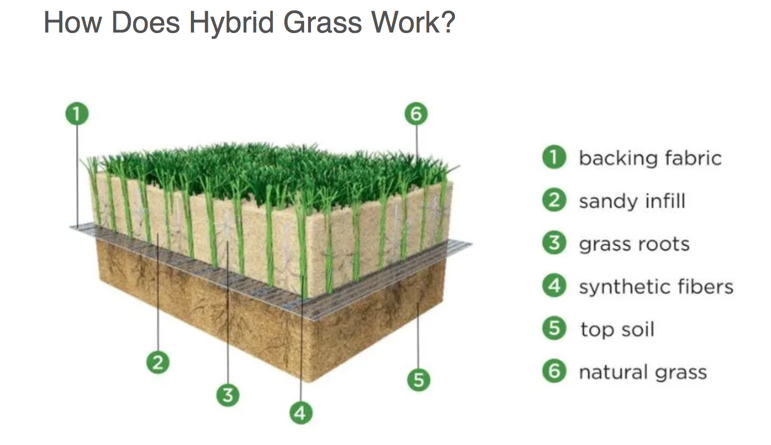
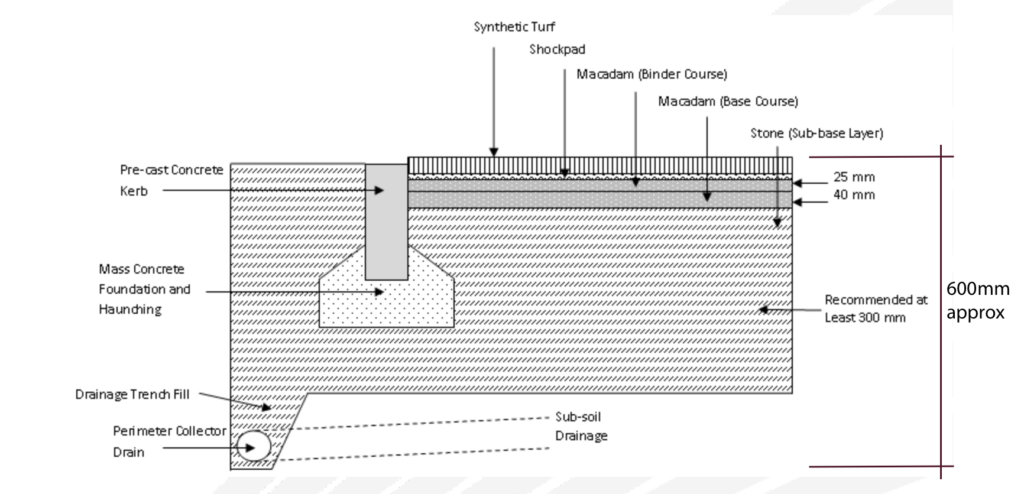
Foundation
- Foundation comprised of stone with concrete haunching.
- The natural drainage that once existed is gone and must be replaced with artificial drainage.
In the Media
- ‘Staggering’ amount of injuries on 4G pitches compared to grass – The Irish Times
- “Injury Severity is a lot greater when playing on an artificial surface!” – Central Statistics Office
- Health Impacts of Artificial Turf: Toxicity Studies, Challenges, and Future Directions – National Library of Medicine
- Jack Nowell is a 31-year-old international rugby player who plays for England and La Rochelle. He discusses 4G pitches with Ryan Wilson (Glasgow Warriors) and Max Lahiff (Bristol Bears) in the video below:
